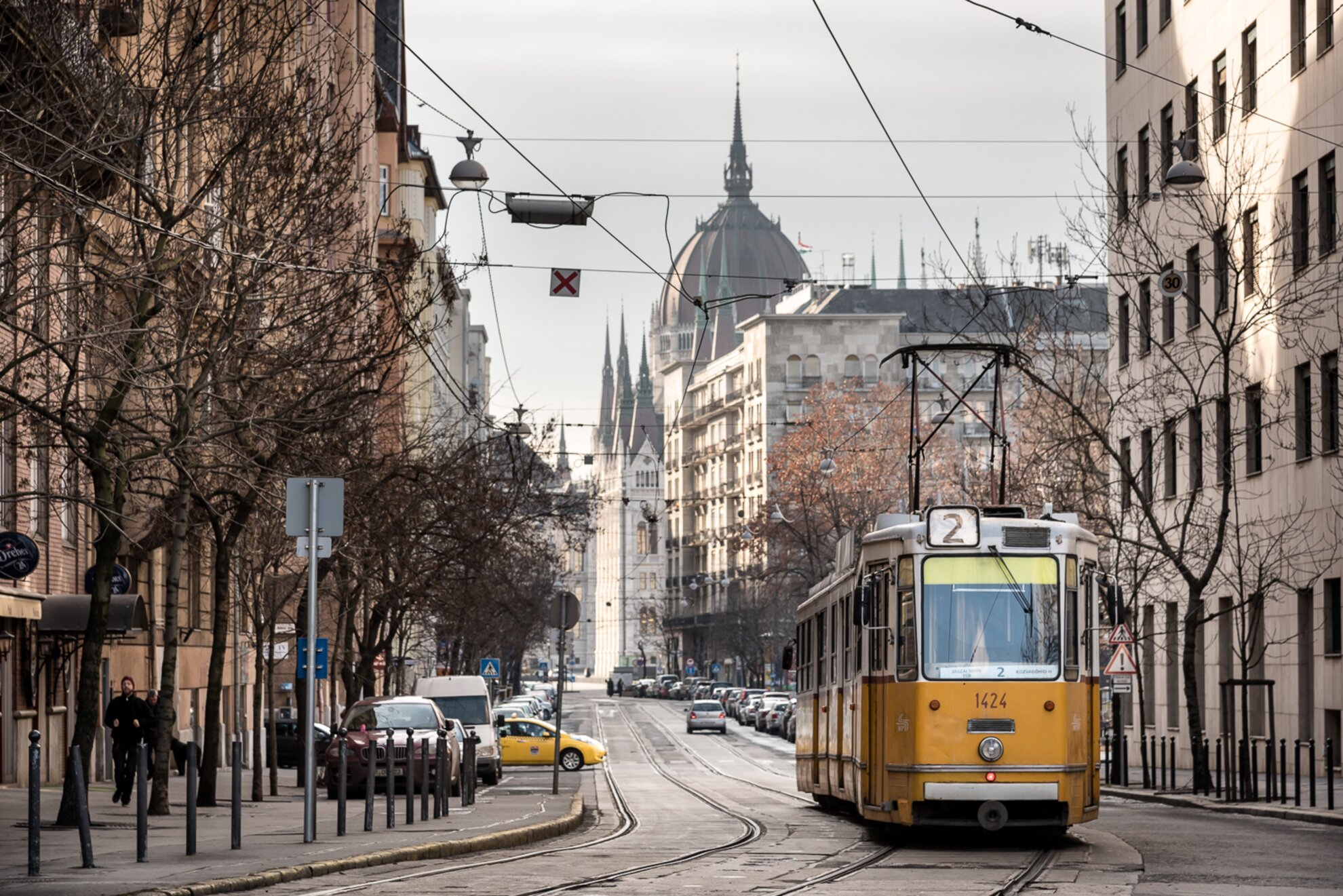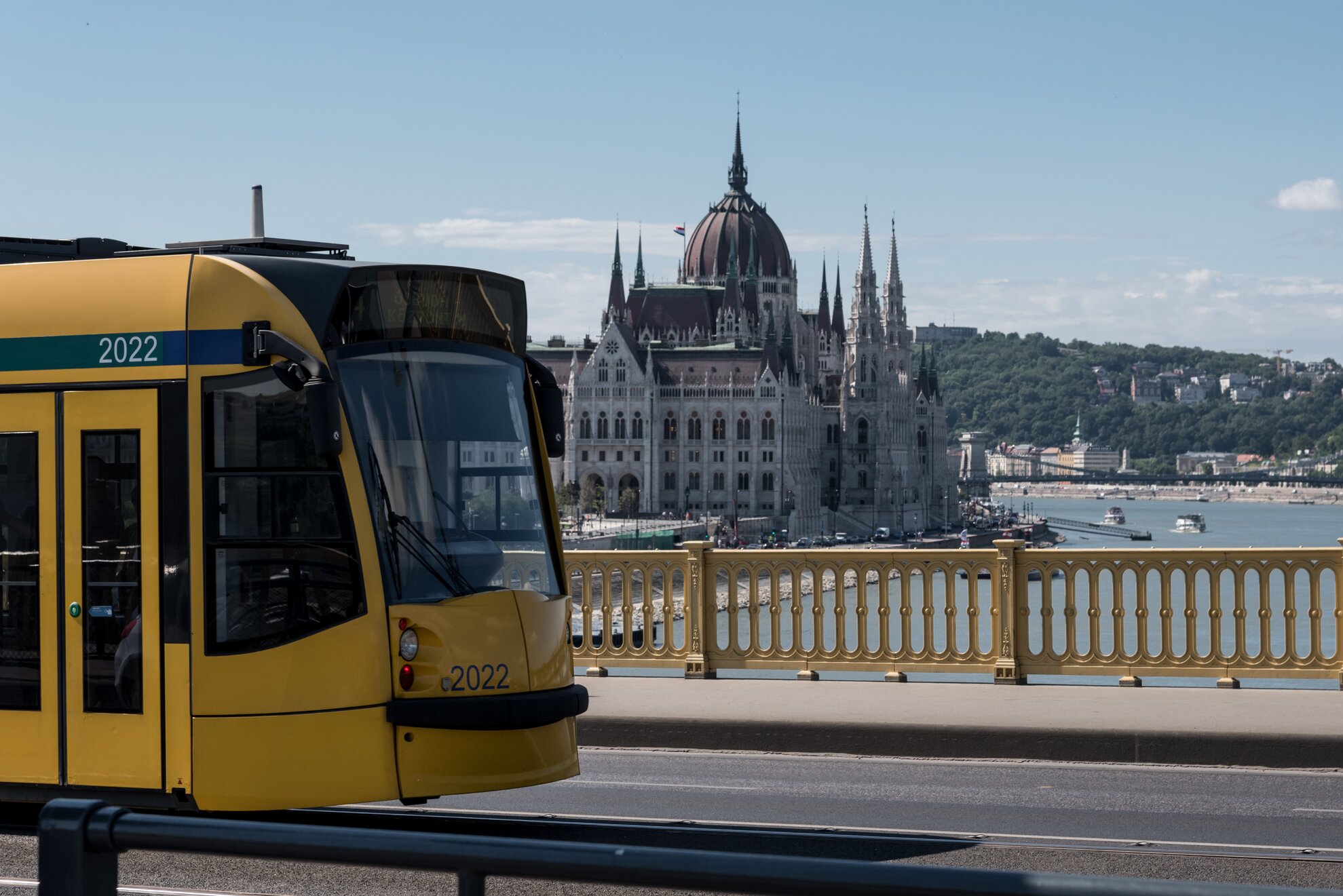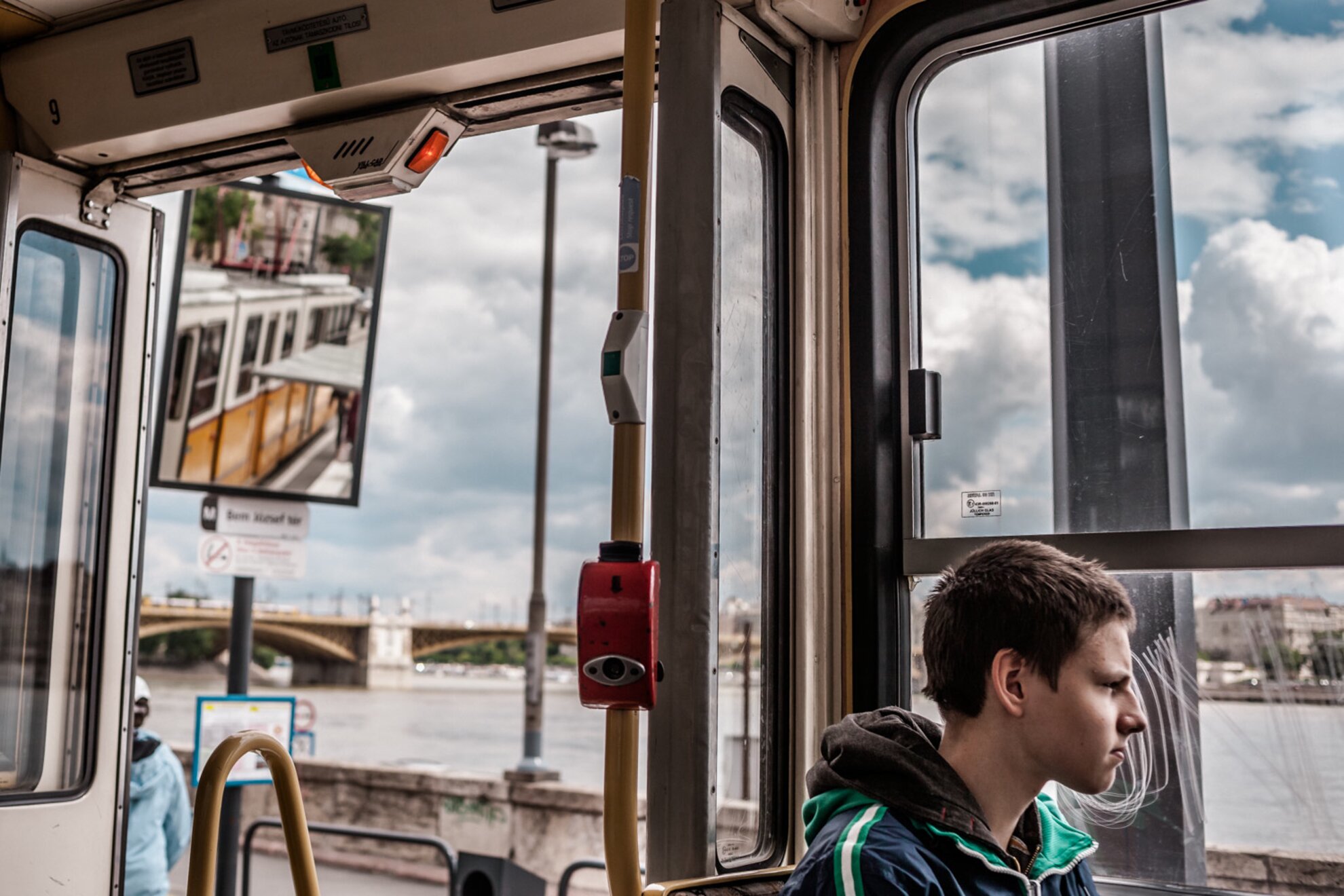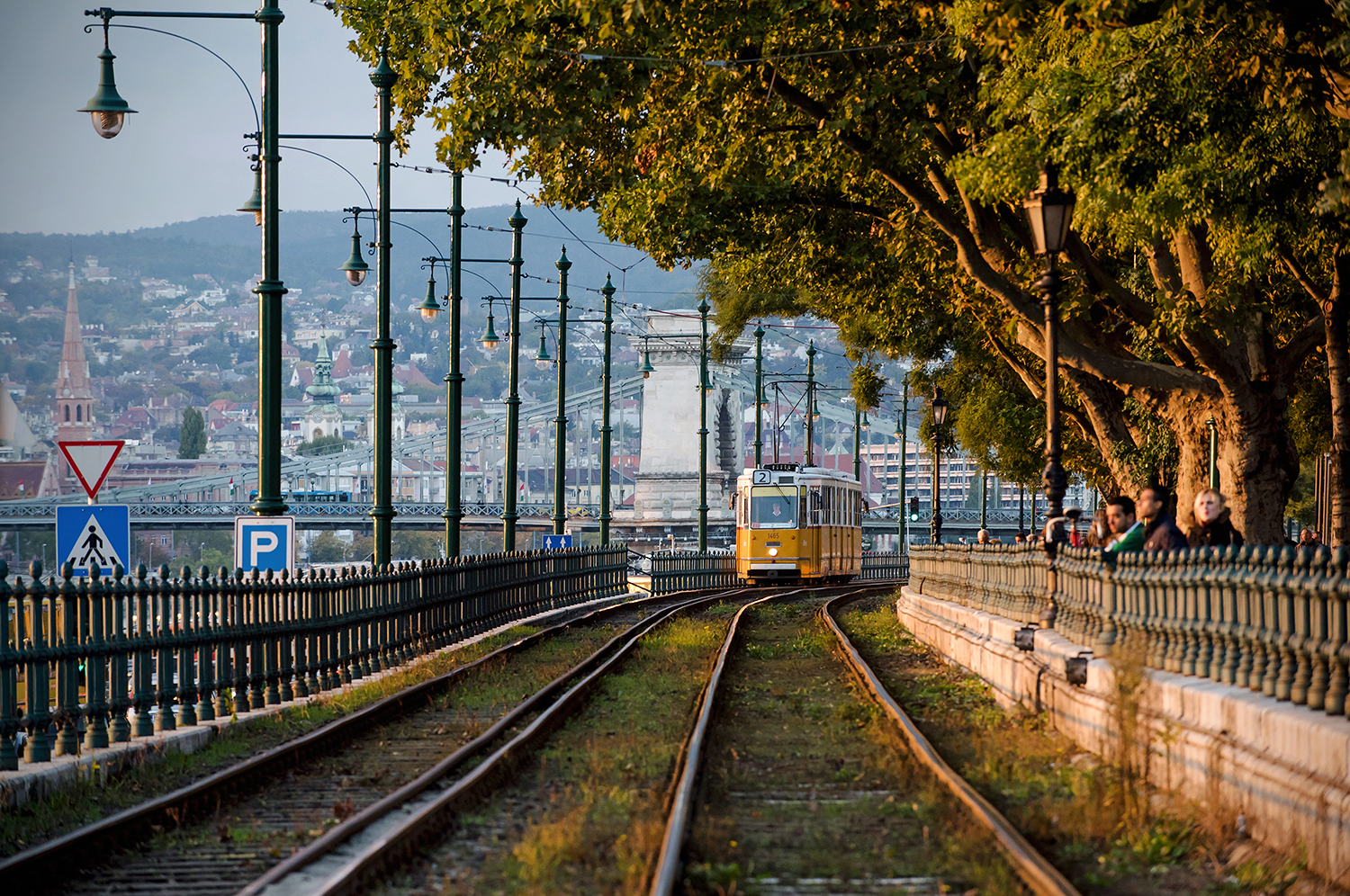No. 2: Pest Embankment

Frequently cited as the most panoramic tram journey in the world, Budapest’s tram 2 follows the Pest Embankment, but showcases the spectacular treasures of the Buda bank. Setting out from Közvágó Bridge, it first takes in the Palace of Arts (aka MÜPA) complex that revitalized South Pest, before running elegantly beneath Petőfi Bridge at Boráros Square. Passing the neo-Gothic wonder of the Great Market Hall, it zooms along the Pest Embankment, offering passengers the perfect view of Citadella and Buda Castle on the opposite bank. Next comes the Chain Bridge, with the Art Nouveau Gresham Palace set across grassy Széchenyi Square. A quick zig-zag past Parliament – look out for the statue of rake-thin poet Attila József – and the tour comes to its gentle conclusion at Jászai Mari Square, and Margaret Bridge.
No. 4-6: Grand Boulevard

Linking the main districts of Pest, the showcase Grand Boulevard loops between Margaret Bridge and Petőfi Bridge. Every two minutes, maybe three, the No. 4 or the No. 6 tram zooms ahead of traffic to offload and pick up scores of passengers at intervals the length of a song intro on your headphones. Each tram sets off from Széll Kálmán Square, stops halfway along Margaret Bridge to admire the green idyll of Margaret Island, then scoots past Nyugati Station, Oktogon, and Budapest’s bar vortex at Király Street and Wesselényi Street. Here you’ll also see two elegant hotels, the Corinthia and, towards Blaha Lujza Square, the Boscolo Budapest, with its famed New York Café. Beyond lies newly trendifying District IX, then Petőfi Bridge, where the No. 4 and No. 6 part ways for two stops into Buda.
No. 41: Buda Embankment

Two trams run along the Buda Embankment, but if you’re staying on for the ride, the No. 41 wins out over the No. 19 as it then heads through leafy Buda, up to Budaörs and the small airport of the same name. At the other terminus, both the No. 19 and No. 41 set off from Bécsi Avenue in atmospheric Óbuda, with remains of its Roman past. Skirting alongside the Danube after the Ottoman-era Lukács Bath, each tram then allows you to count off the bridges – Margaret, Chain, Elizabeth, Liberty – as you glide below Castle Hill then Gellért Hill. Past the Art Nouveau Gellért Hotel, the trams then trundle up Bartók Béla Boulevard before dividing at Buda’s busy transit hub of Móricz Zsigmond Roundabout. The No. 19 terminates at Kelenföld Station, the No. 41 continues on its hilly odyssey through Buda.




